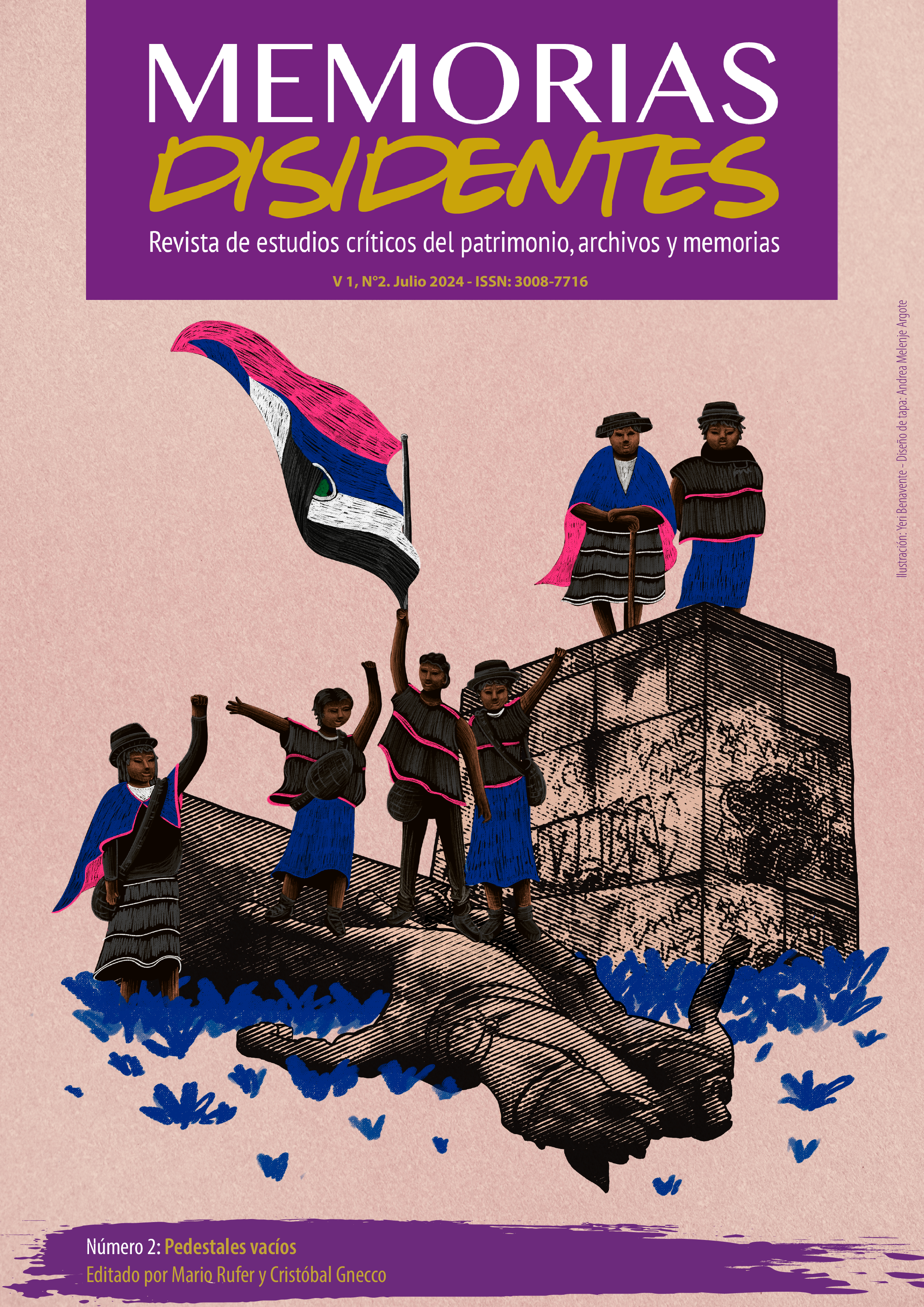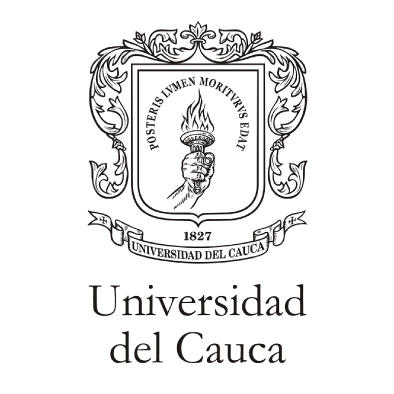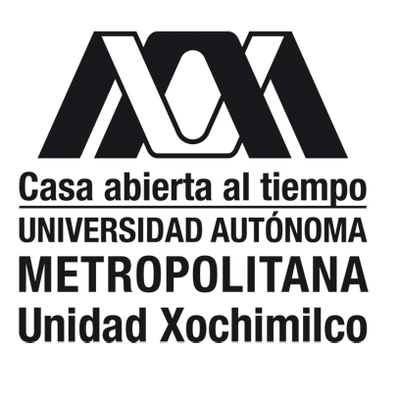Alternative monumentality in the black-afromexican movement of the 21st century
Keywords:
archaeology, afromexicans, history, imagination, heritage.Abstract
The aim of this paper is to analyze three issues in relation to the black-Afro-Mexican population and heritage. The first is to consider Mexican archeology as an allied discipline in the State’s miscegenation policies in the 20th century with the erasure of the African and Afro-descendant presence in the material culture of the Mexican past. The second is to observe the heritage processes of various actions of these peoples today. Finally, to think about how these two elements can be read in the imagination of another archeology through the voice of Aydé Rodríguez, an Afro-Mexican plastic artist who, from her notion of history of voices, discusses the history and materiality of black Afro-Mexicans peoples.
References
Aguilar Gil, Yásnaya (2018). “Nunca más un México sin nosotros”. La Social. http://www.catedrainterculturalidad.cucsh.udg.mx/sites/default/files/NuncaMas.pdf
Aguirre Beltrán, Gonzalo ([1946) 1992). Cuijla, esbozo etnográfico de un pueblo negro. Fondo de Cultura Económica.
Alberro, Solange. (1979). Negros y mulatos en los documentos inquisitoriales: rechazo e integración. El trabajo y los trabajadores en la historia de México. El Colegio de México, Universidad de Arizona.
Alegría, Luis; Acevedo, Pía y Rojas, Carlos (2018). Patrimonio cultural y memoria. El giro social de la memoria. Revista Austral de Ciencias Sociales 34, 21-35.
Bennett, Herman (2009). Colonial blackness. A history of Afro-Mexico. Indiana University Press.
Bidaseca, Karina (2011) Mujeres blancas buscando salvar a mujeres color café: desigualdad, colonialismo jurídico y feminismo postcolonial Andamios. Revista de Investigación Social 8(17), 61-89.
Buenahora, Giobanna (2018). Experiencias silenciadas: breves apuntes sobre la cocina afromexicana. Diario De Campo 4, 74-85.
Cardona, Héctor (2016). De la materialidad del pasado a la legitimación del presente: arqueología y patrimonio. Relaciones. Estudios de Historia y Sociedad 37 (148), 41-61.
Castañeda, Rafael (2012). Piedad y participación femenina en la cofradía de negros y mulatos de San Benito de Palermo en el Bajío novohispano, siglo XVIII. Nuevo Mundo Mundos Nuevos.
Díaz Casas, María Camila (2015). In Mexico you could be free, they didn´t care what color you was: afrodescendientes, esclavitud y libertad en la frontera entre México y Estados Unidos, 1821-1865. [Tesis de doctorado no publicada, Escuela Nacional de Antropología e Historia].
Gómez, Fernando (2007). Análisis del desarrollo disciplinar de la arqueología mexicana y su relación con el patrimonio arqueológico en la actualidad. Cuicuilco 14(41), 219-241.
Hale, Charles (2005). Neoliberal multiculturalism Political and legal. Anthropology Review, 28 (1), 10-19.
Hernández, Judith y Moreno, Blanca Rosa (2014). El trabajo esclavo en San Juan de Ulúa durante el siglo XVI. En Emiliano Gallaga (Ed.), ¿Negro?… No, moreno… Afrodescendientes y el imaginario colectivo en México y Centroamérica, (pp. 137-166). Universidad de Ciencias y Artes de Chiapas.
Hoffmann, Odile (2006). Negros y afromestizos en México: viejas y nuevas lecturas de un mundo olvidado. Revista Mexicana de Sociología 68(1), 103-135.
Juárez, Nahayeilli (2017). El trecho recorrido. Cátedra UNESCO INAH-CIESAS. Afrodescendientes en México y Centroamérica: reconocimiento, expresiones y diversidad cultural.
Ichan Tecolotl. 382 (35). https://ichan.ciesas.edu.mx/el-trecho-recorrido/#:~:text=En%20el%20marco%20de%20esta,Yanga,%20Veracruz%20(2017).
Lara, Gloria (2010). Una corriente etnopolítica en la Costa Chica, México (1980-2000). En Odile Hoffmann (Ed.), Política e identidad. Afrodescendientes en México y América Central, (pp. 307-334). Centro de Estudios Mexicanos y Centroamericanos.
Lewis, Laura (2012). Chocolate and corn flour: history, race, and place in the making of “black” Mexico. Duke University Press.
Naveda, Adriana (1979). La lucha de los negros esclavos en las haciendas azucareras de Córdoba en el Siglo XVIII. Anuario II, 76-85.
Machuca, Jesús Antonio (2023). Raza, nación e ideología del mestizaje en México. Antropología. Revista Interdisciplinaria Del INAH, (45), 42-51. https://revistas.inah.gob.mx/index.php/antropologia/article/view/19203
Mantilla, Johana (2016). Arqueología y comunidades negras en América del Sur: problemasmy perspectivas. Vestígios 10 (1), 15-35.
Marcus, G. E. (2018). Etnografía Multisituada. Reacciones y potencialidades de un Ethos
del método antropológico durante las primeras décadas de 2000. Etnografías Contemporáneas,
(7).https://revistasacademicas.unsam.edu.ar/index.php/etnocontemp/article/
view/475
Martínez Montiel, Luz María (1992). Afroamérica crisol centenario. En José Andrés-Gallegom(Ed.), Tres grandes cuestiones de la historia de Iberoamérica (pp. 9-44). Fundación MAPFRE.
Masferrer León, Cristina (2013). Muleke, negritas y mulatillos. Niñez, familia y redes sociales de los esclavos de origen africano de la Ciudad de México, INAH.
Moedano, Gabriel y Pérez, Emma (Eds.) (1992). Aportaciones a la investigación de archivos del México colonial y a la bibliohemerografía afromexicanista. INAH.
Moreno Figueroa, Mónica Gabriela (2022). Entre confusiones y distracciones: mestizaje y racismo anti-negro en México. Estudios Sociológicos De El Colegio De México, 40, 87-118. https://doi.org/10.24201/es.2022v40.2084
Motta, Arturo (2006). Tras la heteroidentificación. El “movimiento negro” costachiquense y la selección de marbetes étnicos. Dimensión Antropológica 13(38), 115-150.
Rufer, Mario (2014). La comunidad melancólica: etnicidad, patrimonio comunitario y memoria en México. KLA Working Paper Series, No. 12, 1-23. https://kompetenzla.uni-koeln.de/sites/fileadmin2/WP_Rufer.pdf
Ortega León, Víctor (2020). Líneas imaginarias. Arqueología, Nacionalismo y el Norte de México, Secretaría de Cultura. Instituto Nacional de Antropología e Historia.
Quecha, Citlali (2015). La movilización etnopolítica afrodescendiente en México y el patrimonio cultural inmaterial. Anales de Antropología 49(2), 149-173.
Varela Huerta, Itza Amanda (2022). Afroméxico: narraciones sobre esclavitud y mestizaje entre activistas negros-afromexicanos de la Costa Chica, Oaxaca. Revista de Estudos em Relações Interétnicas | Interethnica 23 (1), 218-243.
Varela Huerta, Itza Amanda (2023a). Tiempo de diablos: usos de la cultura y el pasado en el proceso de construcción étnica de los pueblos negros afromexicanos. CIESAS.
Varela Huerta, Itza Amanda (2023b). Black women’s epistemological contributions: Afro-Mexican women in the twenty-first century. En Christen Smith y Lorraine Leu (Eds.), Black feminist constellations. Dialogue and translation across the Americas, (pp. 80-95). University of Texas Press.
Vázquez, Luis (1996). El leviatán arqueológico. Antropología de una tradición científica en México. CIESAS.
Velázquez, María Elisa (2013). Informe sobre el Patrimonio Cultural Inmaterial (PCI) afrodescendiente: México. En Salvaguardia del patrimonio cultural inmaterial de los afrodescendientes en América Latina, vol. 2, (pp. 128-177). CRESPIAL.
Vinson, Ben y Vaughn, Bobby (2004). Afroméxico, el pulso de la población negra en México: una historia recordada, olvidada y vuelta a recordar. Fondo de Cultura Económica.
Villaseñor Alonso, Isabel, & Zolla Márquez, Emiliano (2012). Del patrimonio cultural inmaterial o la patrimonialización de la cultura. Cultura y representaciones sociales, 6 (12), 75-101.
http://www.scielo.org.mx/scielo.php?script=sci_arttext&pid=S2007-81102012000100003&ln
g=es&tlng=es
Wesp, Julie (2014). Bodies of Work: Organization of Everyday Life Activities in Urban New Spain. [Tesis de doctorado, University of California-Berkeley].
Sitios web, diarios y otros archivos consultados
Andrés Manuel López Obrador (16 de diciembre de 2023). La danza de los diablos. [Archivo de video] Youtube. https://www.youtube.com/watch?v=IIQfU7N84gw
Centro Cultural Cimarrón (4 de junio de 2024). ¡Quiénes somos? Centro Cultural Cimarrónhttps://centroculturalcimarron.blogspot.com/search/label/QUI%C3%89NES%20SOMOS
Juárez Huet, Nahayeili (4 de junio de 2024). El trecho recorrido. Cátedra UNESCO INAH-CIESAS. Afrodescendientes en México y Centroamérica: reconocimiento, expresiones y diversidad cultural. Ichan tecolotl. https://ichan.ciesas.edu.mx/el-trecho-recorrido/

Downloads
Published
How to Cite
Issue
Section
License

-
The authors retain the rights of autxr and assign to the journal the right to first publication of the work, registered under the Creative Commons attribution license, which allows third parties to use what is published as long as they mention the authorship of the work and the first publication in this journal.
-
Authors may make other independent and additional contractual agreements for the non-exclusive distribution of the version of the article published in this journal (for example, including it in an institutional repository) as long as they clearly indicate that the work was first published in this journal.
-
The authors grant any third party the right to share and use the article (for non-commercial purposes), provided that the original authors and the citation of the version published in this journal are identified.





